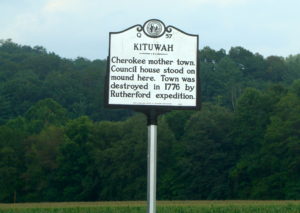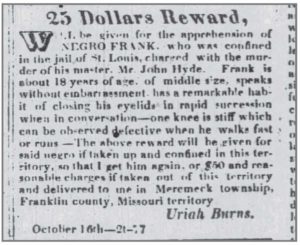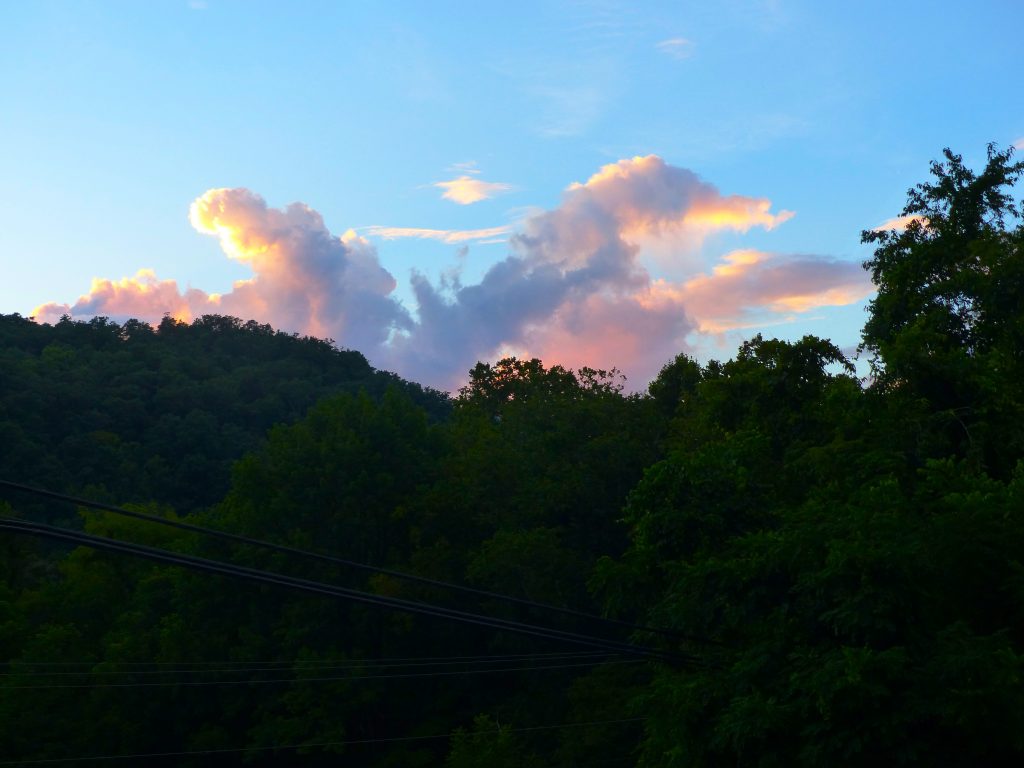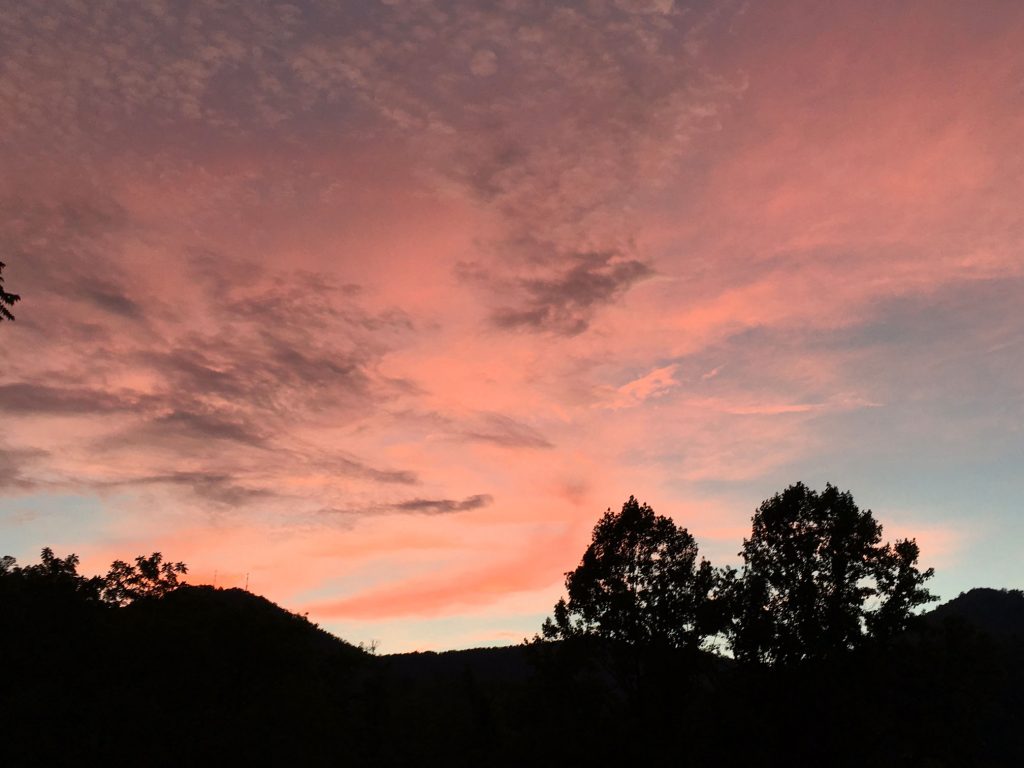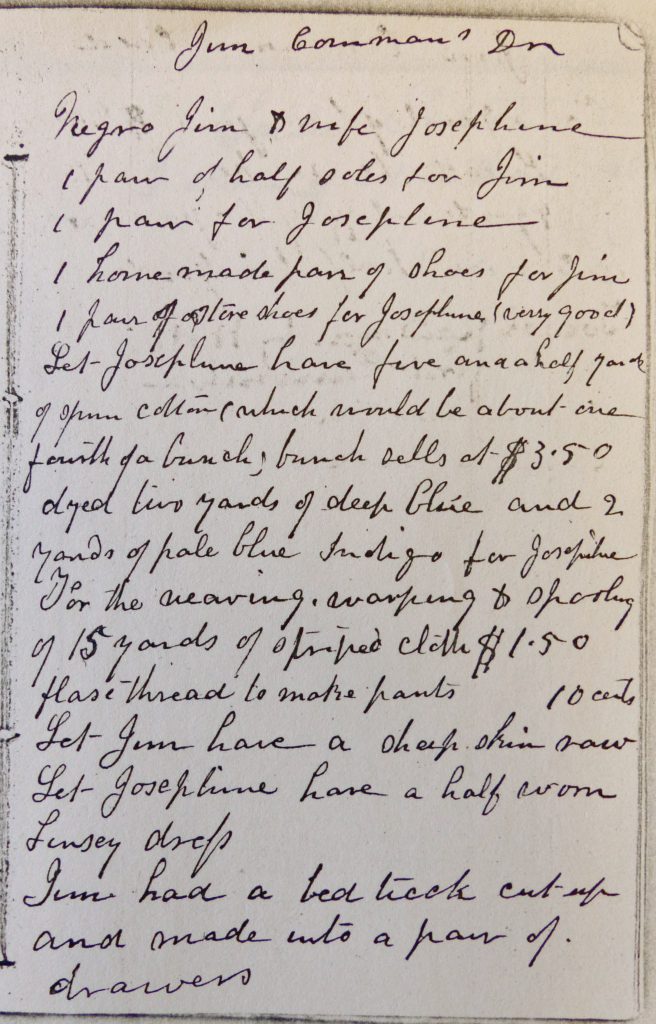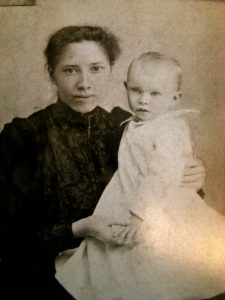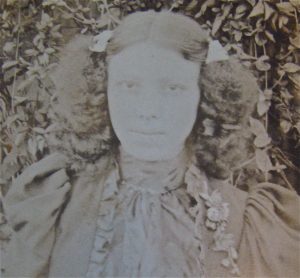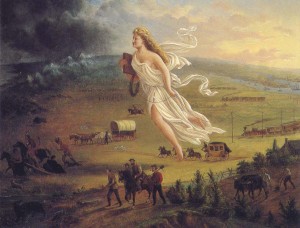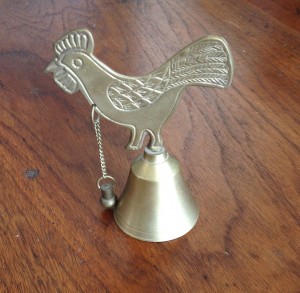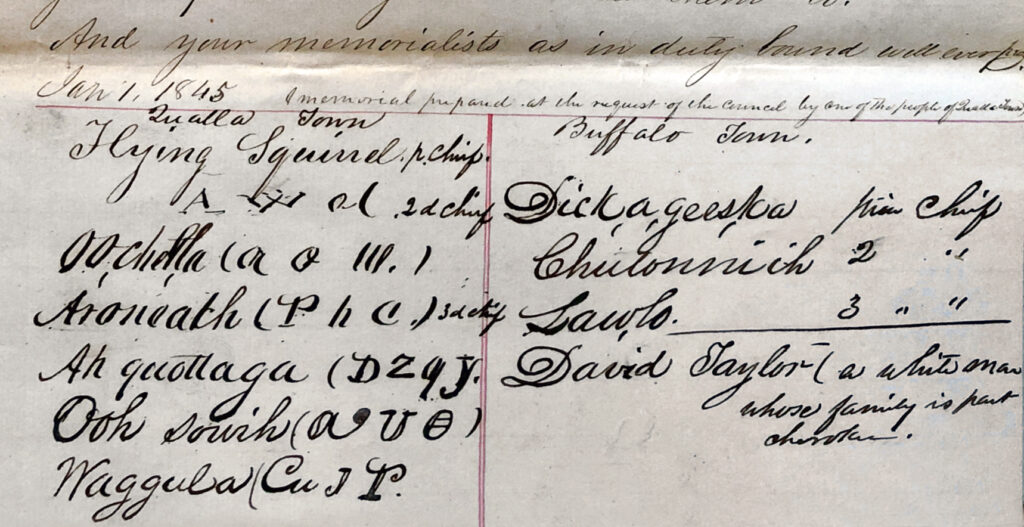
With permission from the Museum of the Cherokee, we are posting our article from the most recent issue of the Journal of Cherokee Studies (vol XXXIV, Summer 2019): 36-47. This is a preview of sorts of our book to come; stay tuned for much more.
By Elizabeth Avery Thomas and Kirk Savage
In 2015, Michell Hicks, the former chief of the Eastern Band of the Cherokee Indians, wrote a preface to a novel about my great-great grandfather, which began, “William Holland Thomas has long held a place of honor among our people, but what we know of his life is a blend of fact and fiction.” For Hicks the most problematic fiction was the elevation of Thomas to the status of “white chief.” The myth effectively put the Cherokees in a subservient role, “as though our friendship with him was valid only if he held that title.”2
As a child I was raised on myths about Will Thomas, the more fantastical the better. There was one about Will taking twenty bags of gold to Washington to pay for the Cherokee lands and how we would be millionaires if the government ever paid us back. There was another about us being part Cherokee and how my lawyer grandfather had destroyed all the evidence because of anti-miscegenation laws. And, of course, there was the myth about Will Thomas being the chief of the Cherokees. I believed them all because I was a kid and because that was what loved and trusted grownups told me. There are, in fact, important truths to be found in these long-held myths, but usually these truths are less about the story’s subject than its teller.
In researching and writing a new history of Will Thomas and his world, I have come to see how the white-chief myth was born in my family, took root in a world that was eager to believe it, and erased not only the truth about the Cherokees but also the truth about Will Thomas himself. In deconstructing the myth, I have begun to know the complex man my great-great grandfather truly was and to see more clearly the fascinating world in which he lived.
William Holland Thomas, born to a penniless single mother in Buncombe County, North Carolina in 1805, had, over the course of his long life, many identities: he was poor and rich; a country boy and an urbane gentleman; a white man and an adopted Cherokee. But of all the things he truly was, the identity that has adhered most firmly to him is something he never was: the white chief of the Cherokees. In its fully elaborated form, the story claimed that Will succeeded to the chiefdom at the urging of his adopted father, Yonaguska, on his deathbed, after the Cherokee chief had successfully led his band to evade removal in the late 1830s and to stay on their ancestral land in North Carolina. The myth took shape long after these events of 1838-39 had passed, in second-hand accounts written by whites for white audiences. Once in print, these accounts were transformed from hearsay to “documents” and from documents into fact. To tell a more authentic history of the Cherokees, we have to deconstruct these kinds of “documents” and look at other sources, starting with the voices of the Cherokee people themselves.
It is telling that the one surviving eyewitness account of Yonaguska’s death, which can shed so much light on the subsequent myth, has never been published and never even been seriously examined in histories of Will Thomas and the Eastern Band – although it is preserved in the archives of the Great Smoky Mountains National Park. This beautiful brief account of Yonaguska’s life and his death comes from Yonaguska’s brother Wilnota, and was transcribed into English in 1844. It ends with an extraordinary vision of “God” sitting at Yonaguska’s deathbed and, as it comes to a close, we get a glimpse of Yonaguska in his world:
He then became speechless & departed with adding “now, now, now,” and shook hands with his daughter & then handed his hand all around him in like manner & with a smile raised his hand towards heaven and breathed his last.3
What Wilnota does not say – and what Yonaguska does not do – is highly significant. Nowhere in the entire account does Yonaguska give any orders of succession, for anyone. Nor is any mention made of Will Thomas, who at the time Yonaguska died was probably at the Cherokee agency in Tennessee doing what he did best – business for the North Carolina Cherokees. In Wilnota’s eyewitness account, the myth of the white chief is nowhere to be found.
THE ORIGIN OF THE MYTH
The white-chief myth was built over time by three white informants who had known Will and talked to him about his life with the Cherokees. In each of these sources it is not easy to disentangle what Will may have told them from what they embroidered or even fabricated outright. Like a game of historical telephone, we can see the story shifting over time, taking agency away from the Cherokees and transferring it to the white man, Will Thomas.
The first source, and the only one published in Will’s lifetime, was Charles Lanman’s popular travelogue, Letters from the Alleghany Mountains (1849). Lanman was a journalist, and it is clear from reading his account that both Will and the Cherokees orchestrated virtually every detail of Lanman’s visit. It was an elaborate show of assimilation designed to camouflage the Cherokees’ real goal of maintaining their traditional life on their ancestral land. Lanman was delighted by this show of “civilization,” but in his account we can catch oblique glimpses of the careful line Will and the Qualla Cherokee were treading in this bit of public relations:
The Indians of this district, having formed themselves into a regular company, with appropriate regulations, they elected an old friend of theirs, named William H. Thomas … to become their business chief, so that the connection now existing between the two parties is that of father and children.4
The sentence starts by acknowledging the local Cherokees as a self-governing group, but ends with the reassuringly paternalist formula of Will as their father.5 In between, the term business chief limits Will’s role and suggests that the Cherokee have some independence, but not too much.
The first time, however, that Will was claimed, in print, to be a full-fledged political chief of the Cherokees is in a short biographical article published in 1899 by Will’s daughter, Sallie Thomas Avery. She wrote that sometime after Will’s adoption her father became “the adviser in all the business of the tribe, and was soon declared to be their head-chief.”6 While Lanman had conflated Will’s business role with the idea of the chief, Sallie Avery separated the two. In her formulation, the role of “head-chief” clearly exceeded and superseded his business role as advisor.
The next and most influential iteration came from James Mooney’s landmark book, Myths of the Cherokee, first published a year after Sallie’s essay, with an acknowledgement to her.7 As an anthropologist working for the Smithsonian’s Bureau of Ethnology, Mooney spoke to both Cherokee and white informants, but he was most profoundly affected by a long conversation he had with Will in the insane asylum where Will had been living for almost twenty years. Mooney actually left us two texts to consider: the notes he took while interviewing Will, and the book he wrote from those notes. At times the two versions are in conflict.
In his notes Mooney wrote that, at his death, Yonaguska “left word for Thomas to advise [the] Indians in his place.” This vague statement can be interpreted in a number of ways, but it does point firmly to Will as an advisor. In his book, however, Mooney extravagantly embellished that modest account:
Extended on a couch, [Yonaguska] made a last talk to his people, commending Thomas to them as their chief and again warning them against ever leaving their own country. Then wrapping his blanket around him, he quietly lay back and died.8
In Wilnota’s first-hand account, Yonaguska made none of these declarations; his vision was spiritual, not political. Mooney’s version not only strays markedly from the eyewitness account but also transforms his own notes in two key ways: first by changing the message from a communication to Will into a directive to the Cherokees; and then by changing Will’s role from trusted advisor to the more exalted status of chief. Mooney underscored this transformation by adding that, after Yonaguska’ s death, the Cherokees “knew no other chief than Thomas until his retirement from active life.”9 Mooney’s claim of “no other chief” is all the more stunning given that he talked to Cherokees who actually were chiefs, and that he did know something about how the Cherokee governed themselves. But his version of events is even less plausible if we look more closely at the world Yonaguska and his adopted son knew.
YONAGUSKA AND THE ROLE OF THE CHEROKEE CHIEF
Yonaguska was, first and foremost, proudly and almost militantly traditional. He was born before the American Revolution at the mythic heart of the Cherokee world, in the sacred mother town of Kituhwa, at a time when the only whites who dared to enter their world were traders. Just as he refused to leave his ancestral land, he steadfastly refused to speak English or adopt Christianity.
Yonaguska made it his life’s work to keep his people on their land and to protect and promote the Cherokees’ right to continue to live according to their ancient customs. According to Cherokee origin stories, the Great Buzzard had made the valleys and the mountains where they came to be as a people. For the Cherokee, and specifically for Yonaguska, Cherokee traditions of place, language, belief, ritual and governance were all inextricably bound together into their collective identity. This is why he – and after him, Will – worked so desperately hard to keep the mountain Cherokee on their ancestral land and to reestablish a version of traditional Cherokee town governance.10
The primary unit of Cherokee governance was the town, which was governed by a council that was, effectively, the people of the town. The chief presided over the town council, in which all could participate. Council decisions were made by a formalized process of coming to consensus. Everyone could discuss and debate until there was general agreement among them. While an important function of the chief was to speak, and sometimes even try to persuade, ultimately his job was to articulate the will of the council, which was indivisible from the will of the town and its people. “His authority [never] extended beyond specific instructions issued by the council on each occasion,” according to the leading scholar on the subject. Headman was the term the Cherokees themselves used, which represents much better this position that had no coercive power and answered to the collective will.11
By all indications, Yonaguska’s mountain-dwelling Cherokees – later known as the Qualla Cherokees, the forerunners of the Eastern Band – took this governance system very seriously. The Qualla Cherokees were considered, even by other Cherokees, to be the most traditional and “backward” of the tribe because they were the least assimilated into Anglo-American culture.12 Yonaguska would most certainly not have betrayed all he believed in, lived by, and worked for in order to run roughshod over consensus governance and autocratically choose a new chief for his town. And even if he had, his people would not have accepted it.
WILL AND HIS WORK FOR THE CHEROKEES
Just as the Qualla Cherokees’ own beliefs and practices make the succession story implausible, the patterns of Will’s work life were also plainly inconsistent with the nature of a chief’s job. To fulfill the most basic requirement of that office, which was to preside over the town council, the chief or headman had to be present in the community and at councils. Will did participate in councils, particularly when he had business to present. But his attendance was, we know, intermittent at best. By the accounts in his own daily business diaries, he was constantly on the move. He often rode as much as twenty-five miles a day attending court sessions, overseeing his various stores, managing road projects, as well as working on Cherokee matters. His work on behalf of the Cherokees also took him away to Washington, sometimes for years at a time. Although he always remained active in the life of the Qualla Cherokee, at the most basic level he could not have been their chief simply because he was not with them much of the time.
Furthermore, while we often see in the diaries that he was “attending to the business of the Indians,” or “making out claims,” or “buying land for the Indians,” he never noted that he presided over council meetings. He always “attended” them. On one emergency occasion, he “sent for the chiefs” and “started to call a council”; he noted the next day that they had “consented to hold a council.” Even here in a personal document meant only for his eyes or his clerk’s, he was careful to distinguish his own standing from the chiefs’ and to observe the traditional procedures of governance that remained firmly in place.13
This pattern holds in all the public documents produced by Will and the Cherokees themselves. Before his decline into insanity, Will never called himself a chief in public. When he introduced himself, shortly after Yonaguska’s death, to Hartley Crawford, the Commissioner of Indian Affairs, he identified himself as “the constituted agent or attorney in fact for most of the Cherokees remaining in the States of North Carolina, Georgia, and Tennessee authorized by them to settle all their business with the United States arising under the treaty of 1835 and 1836.” Crawford in turn treated Will as a legal representative and later as a disbursing agent working as a liaison between the U.S. government and the eastern Cherokees.14 In Will’s various petitions to Congress he would call himself an “attorney” for the Cherokees east and an “adopted Cherokee.” In one such petition of 1846, he described himself as the “adopted son” of “a distinguished chief of [Qualla] town by the name of Yamaguska [Yonaguska].” Decades later, when he responded to a lawsuit filed against him, he asserted that he had acted for the Cherokees under powers of attorney that “were signed by the chiefs and head men and a great many of the prominent individual Indians on behalf of themselves and the balance of the tribe.”15
The Cherokees in turn never called Will their chief. In their various petitions and powers of attorney written in the 1840s and 1850s, they clearly laid out the nature of the relationship. In 1841, for example, the Qualla Cherokees submitted a power of attorney that Will delivered to the Office of Indian Affairs. In it they presented themselves as the “chiefs and heads of Cherokee families,” again putting the lie to Mooney’s claim that “the band knew no other chief than Thomas.” They referred to Will as their “long tried and worthy friend (or Willosteka), an adopted Cherokee.”16 One hundred and twenty Cherokees signed the document. The signatory at the top of the list was Flying Squirrel indicating his status as what we would call “head chief.” [See illustration at top of post for another example dated 1845.]17
When Will wrote to the Qualla Cherokees from 1839 into the 185Os, he often addressed his letters to “the Cherokee chiefs” or “chiefs and people.” After Qualla Town formalized its sub-towns, he would write “to the chiefs and Cherokee Indians of Paint, Wolf, Deer, Bird, and Pretty Woman Towns.” These long letters did not condescend in any way to his Cherokee correspondents. He carefully explained his activities on their behalf and the political negotiations going on in Washington – writing in great detail, as one member of a group does to others. He often did close the letters with advice, harkening back to the theater of assimilation they all engaged in for Lanman’ s benefit. He advised them to be temperate, peaceable, honest, and industrious, and “lay by your corn in such a manner as superior to the whites.” Will was reminding them to be what we would call today a “model minority.” He did so because they still remained under threat of removal, from both the federal government and from local whites who continually petitioned the state legislature to get rid of the Cherokees. Will did not want to give these hostile forces any additional ammunition.18 To maintain their language, customs, and governance, the local Cherokees found it increasingly necessary to present an exemplary face of good citizenship to the white world.
In his relations with the tribe, it is clear that he knew his place among them and not only adhered to that place but valued and respected it. Among whites like Lanman, Will typically kept a low profile, letting the Cherokees and their accomplishments speak for themselves. But when it served the group’s larger interests, Will too would participate in the theater of assimilation by assuming a more paternalistic stance. For instance, in a lengthy 1845 newspaper article on the Qualla Cherokees that was reprinted nationwide, deep in the second column account Will inserted the nugget that Yonaguska at his death “assigned the care of his people” to “an orphan boy, who became an adopted Cherokee.” While the word chief remained unsaid, Will was clearly playing to a sentimental paternalism to reassure the publication’s national audience that the Indians were under appropriate white guidance. 19
The only time that Will – in his right mind – ever used the word chief in association with himself was in private correspondence to his bride-to-be, Sallie Love, in 1857. He wrote, “I look forward [to] the time when we will ride through [the Qualla Cherokees’] settlement on our way to our mountain home, when you will witness the affection of these people for their ‘so-called Chief.'” The Love family were among the wealthiest of the local white elite, and Sallie Love had led a very protected life. Though she spent her entire life in western North Carolina, she never interacted with the Cherokee before she met Will. When he brought her to a Cherokee dance, she was extremely uncomfortable. It seems likely, then, that by calling himself the “so-called chief” Will was suggesting a hierarchical framework that would be recognizable and palatable to her, without fully claiming the title.20
THE WHITE CHIEF AND WHITE SUPREMACY
The evidence is voluminous and compelling. No one – not Will, not the Cherokee, not the Commissioner of Indian Affairs – saw or represented Thomas as the chief or even a chief. Why then has the myth proved to be so durable for so long?
An answer starts to emerge in the mindset of Will’s daughter Sallie, whose article was the first to declare Will the Qualla Cherokees’ “head chief.” Sallie was born in October 1861, five months after the start of the Civil War. The war was a dramatic turning point, a breaking point even, in Will’s life. Before he went to war for the Confederacy, he was a calm, affable, and non-confrontational man. Whether that was because he spent much of his life hiding his mixed Cherokee white identity from the world, or because he absorbed the Cherokee harmony ethic from his adopted people, we cannot know. But before the Civil War he was the kind of man who, watching hostile militia tear down his store during the Cherokee removal, stayed utterly calm and treated his aggressors “with friendship.”21
Sallie Thomas Avery never knew that man. He went to war before she was born and, when the war ended, he was insane. One of the ways his insanity manifested itself was in delusions of grandeur. In an 1868 letter to the Cherokee Nation, he signed himself “Will Ooh-coo-wi-you-hih” (in Cherokee, “u gv wi yu hi”), which translates as chief.22 That same year he claimed to be “a lineal descendant of Pocahontas[,] the King of the Cherokees of which tribe all others were but tributary.” That was the man that Sallie Thomas knew – a man who could be wild, unpredictable, and given to insane flights of self-aggrandizement.23 It seems likely that she, and Mooney after her, chose to believe at least one part of his delusion, his assumption of the mantle of white chief.
But this begs the question why she did so, knowing that her father was insane. Her own life and its social context can help us understand. She came of age after Reconstruction, when elite white Southerners reestablished their power by enforcing racial segregation and black disenfranchisement, which they justified on an openly stated platform of white supremacy. In 1888 Sallie Thomas married Alphonso Calhoun Avery, a former slaveowner, Confederate officer, and leader of the North Carolina Ku Klux Klan. By then he was also a State Supreme Court justice.24
Though unable to vote herself, Sallie Avery was deeply involved in the politics of white supremacy. She wrote letters exhorting the men in her life to stay true to the Democratic Party and the white supremacist rallying cry. She joined the United Daughters of the Confederacy and was involved with them in reframing the cause of the Civil War from slavery to “states’ rights,” and in erecting Confederate monuments to codify that new history.25 Sallie, whose father had been the devoted son of a Cherokee man and member of the tribe, had to find a way to fit that aspect of his life into her world view of strict racial hierarchy. The only way she could do that was to see her father as their leader. Will Thomas, adopted Cherokee, was recast as Will Thomas, Chief of the Cherokees and benevolent savior of a backward benighted people. That new Will also fit nicely with the white-supremacist rhetoric that Sallie and her husband shared, of the “good master” who brought Christianity and civilization to enslaved Africans and to “suffering Indians” as well.
CONCLUSION
In 2015, I attended a reenactment of the final skirmish between Will Thomas’ Legion and the Union troops of Lieutenant William Bartlett, which had led to the (supposed) “last shot fired” in the Civil War. As I was waiting for the reenactment to begin, I wondered if the Will Thomas we would see would be the true Will as he appeared on the day of the surrender – deranged, stripped to the waist, and smeared with war paint.26 Unsurprisingly, the Will Thomas the reenactors presented was the sanitized Colonel Thomas, fully dressed, fully sane, gallant, and brave. That Will Thomas, the Confederate Colonel and White Chief, is beloved in the white imagination: he gives them (us) an unthreatening model of interracial relations, with whites in power and brown people grateful and subservient; he tells us we are benevolent civilizers rather than rapacious colonizers.
Sallie’s statement that her father was “declared head chief,” and its embellishment soon after by James Mooney into “the only chief they knew,” took root in this collective white imagination and was then repeated so often that it has erased the truth. Will Thomas was many things to the Cherokees: he was taken in as a son, a member of their tribe and their kin networks; he was their agent and attorney; and most importantly, he was the tireless defender of his adopted father’s vision of keeping his people on their ancestral land. The term that sums all that up best is the quiet, unassuming description that the Cherokees themselves used – their “long tried and worthy friend.”
NOTES
1 Though both authors worked equally on this piece, we have chosen to narrate this from Elizabeth’s point of view since it is about her family and her reckoning with them.
2 Robert Conley, Wil Usdi: Thoughts from the Asylum, A Cherokee Novella (Norman, OK: University of Oklahoma Press, 2015), xi. More recently, Andrew Denson has challenged the “white chief” myth and asserted that it would be more accurate “to describe him as their legal representative and interlocutor when dealing with non-Indians”; Denson, Monuments to Absence: Cherokee Removal and the Contest Over Southern Memory (Chapel Hill, NC: University of North Carolina Press, 2017), 42-43.
3 Wilnota, “The Life and Memory and Death of my brother Yonah Guskah,” February 21, 1844, Catalog No. 815, National Park Collections Preservation Center, Townsend, TN. The handwriting may be that of Samuel Sherrill, clerk for Will Thomas at his Qualla Town store.
4 Charles Lanman, Letters from the Alleghany Mountains (New York: Putnam, 1849), 94.
5 While the term “father” was often given to the U.S. President in treaty language and petitions, the Cherokee did, in fact, use familial titles such as “father” as expressions of inter-generational respect within their own community; William Harlen Gilbert, Jr., Eastern Cherokee Social Organization (PhD diss., University of Chicago, 1934), 41, 82-83.
6 Sallie Thomas Avery, North Carolina University Magazine, New Series, Vol. 16, No. 5 (May 1899): 292. One additional early textual source we have found is a little-known history of the Cheraw tribe published in 1867, in which Will Thomas is identified as the “head man, or chief” of a small group of Catawbas in western North Carolina who had left South Carolina and joined with the Qualla Cherokees; Alexander Gregg, History of the Old Cheraws: Containing an Account of the Aborigines of the Pedee (New York: Richardson and Co, 1867), 3. Thomas did in fact help arrange the Catawbas’ move to North Carolina but did not call himself their chief or headman.
7 James Mooney, Myths of the Cherokee (Washington, D.C.: Government Printing Office, 1900), 162. Mooney corresponded with Sallie Avery about her father’s biographical details; Mooney to Mrs. Avery, November 19, 1890, William Holland Thomas Papers, Southern Historical Collection, University of North Carolina at Chapel Hill.
8 Mooney, Myths of the Cherokee, 163.
9 Mooney, Myths, 161.
10 Yonaguska was non-literate, and reliable sources on him are scanty. Our biography uncovers some new material, but the outlines of his perspective can be seen in Lanman’s account of a remarkable speech he gave during the removal period, which was probably recited to Lanman by either Will or one of the local Cherokee elders; see Letters from the Alleghany Mountains, 108-110.
11 John Phillip Reid, A Law of Blood: The Primitive Law of the Cherokee Nation (New York: New York University Press, 1970), 50-52 (quotation on 52). On Cherokee governance, see also John R. Finger, The Eastern Band of Cherokees, 1819-1900 (Knoxville, TN: University of Tennessee Press, 1984), 4-5, 67.
12 Finger, Eastern Band of Cherokees, 13-14, 42. The long-running federal agent for the Cherokees, Col. Return J. Meigs, wrote that the mountains were a “nursery of savage habits,” Meigs to Benjamin Hawkins, February 13, 1805, available at: https://www.fold3. com/image/260/205473910.
13 For example, January-February 1844, October 22, 1841, December 11, 1841, February 18, 1852, April 1, 1852. The emergency council meeting is noted December 18-20, 1841. All diaries are in the Museum of the Cherokee, with accompanying transcriptions.
14 Thomas to Hartley Crawford, May 20, 1839, National Archives, M234 Reel 83.
15 “Memorial of the Cherokee Indians Residing in North Carolina,” June 25, 1846, Senate Document 408, 29th Congress, 1st Session, 23, available at: http://toto.lib.unca.edu/ booklets/memorial_cherokee/default_memorial_cherokee.htm; “Separate answer of Wm. H. Thomas to the Bill of Complaint of the Eastern Band of the Cherokee Indians,” June 28, 1873, Equity Case 701 (1874), U.S. Circuit Court for the Western District of North Carolina, Asheville Term, Record Group 21, National Archives at Atlanta.
16 Will was sometimes referred to by the Cherokee name “Wil-usdi.” “Will-osteka” may be a variant of that [usdiga] or another name for him.
17 Thomas to Crawford, November 13, 1841, enclosing power of attorney from the Qualla Cherokee, National Archives, M234 Reel 85. See also, for example, Memorial of the Qualla and Buffalo Indians, January 1, 1845, in 28th Congress, 2nd session, Senate Document 90; original in Record Group 46, National Archives [see illustration at top of article].
18 Thomas to Chiefs of the Qualla Town Cherokees, January 11, 1840, Letterbook 1839- 40, University of Tennessee; Thomas to Cherokee Chiefs and people of Qualla Town, June 25, 1845, and Thomas to chiefs and Cherokee Indians, March 6, 1850, both in Equity Case 701 (1874), National Archives at Atlanta; Thomas to the Cherokees at Qualla Town, July 12, 1839, Letterbook 1839-40.
19 Raleigh Weekly Standard, June 4, 1845, 1, reprinted from the Washington Union.Thomas to Sally Avery, January 4, 1857, William Holland Thomas Papers, Duke University, Microfilm reel 1.
20 Thomas to to Sally Avery, January 4, 1857, William Holland Thomas Papers, Duke University, Microfilm reel 1.
21 Statement of Capt. Moses Cunningham, enclosed in letter from Thomas to Governor Dudley, October 29, 1837, Thomas Papers, Duke University.
22 Letter to the Cherokees of the Cherokee Nation West, November 15, 1868, Thomas Papers, Duke University, Microfilm reel 3; the letter is signed by sixteen Cherokees and Will Ooh-coo-wi-you-hih at top. Many thanks to Bo Lossiah for transcribing this into Cherokee phonetics and translating it.
23 The Pocahontas claim comes from trial testimony recorded in Thomas v Everett, Jackson County Civil Actions, 1891, at: https://www.familysearch.org/ark:/61903/3:l:33S7- 916D-37N?i= 704&cc= 1916185&cat=2013489. The testimony recounts many other examples of grandiose delusions continuing long after the Civil War.
24 Avery’s activism for the Klan in the 1860s and 1870s is proudly recounted in Josephus Daniels, ”Address by Josephus Daniels on Presentation of a Portrait of the Late Judge Alphonso Calhoun Avery,” April 11, 1933, published in North Carolina Reports 204: 824-825.
25 One representative letter to her husband urges her male relatives to hold the line for the Democratic party against the “gold bugs” and explains that “I wanted you and Joe to stand by “White Supremacy and the white metal [silver]”; letter from Sallie to A.C. Avery, May 1, 1896, in authors’ collection.
26 Philip Gerard, “Little Will’s Cherokee Legion,” Our State, 80 (September 2012): 70; William Williams Stringfield, Memoirs of the Civil War, 75, manuscript, Calvin M. McClung Historical Collection, Knox County Public Library, at: http://cmdc.knoxlib.org/cdm/re:Ucollection/p15136coll4/id/1624. Will showed up for the surrender parley with twenty Cherokee warriors, and it is not entirely clear from the Stringfield memoir whether both Will and the warriors were bare-chested and painted. There is every likelihood, however, since it is clear that he was in a manic state at the time. Testimony from James Terrell in a later court case indicates that “he grew very much excited[,] vowed he would never give up – that he was dictator of W.N.C. [western North Carolina] and intended to make a Switzerland out of it and be President”; Thomas v Everett, Jackson County Civil Actions, 1891. Testimony from that case also verifies that he did strip and paint himself on other occasions.

